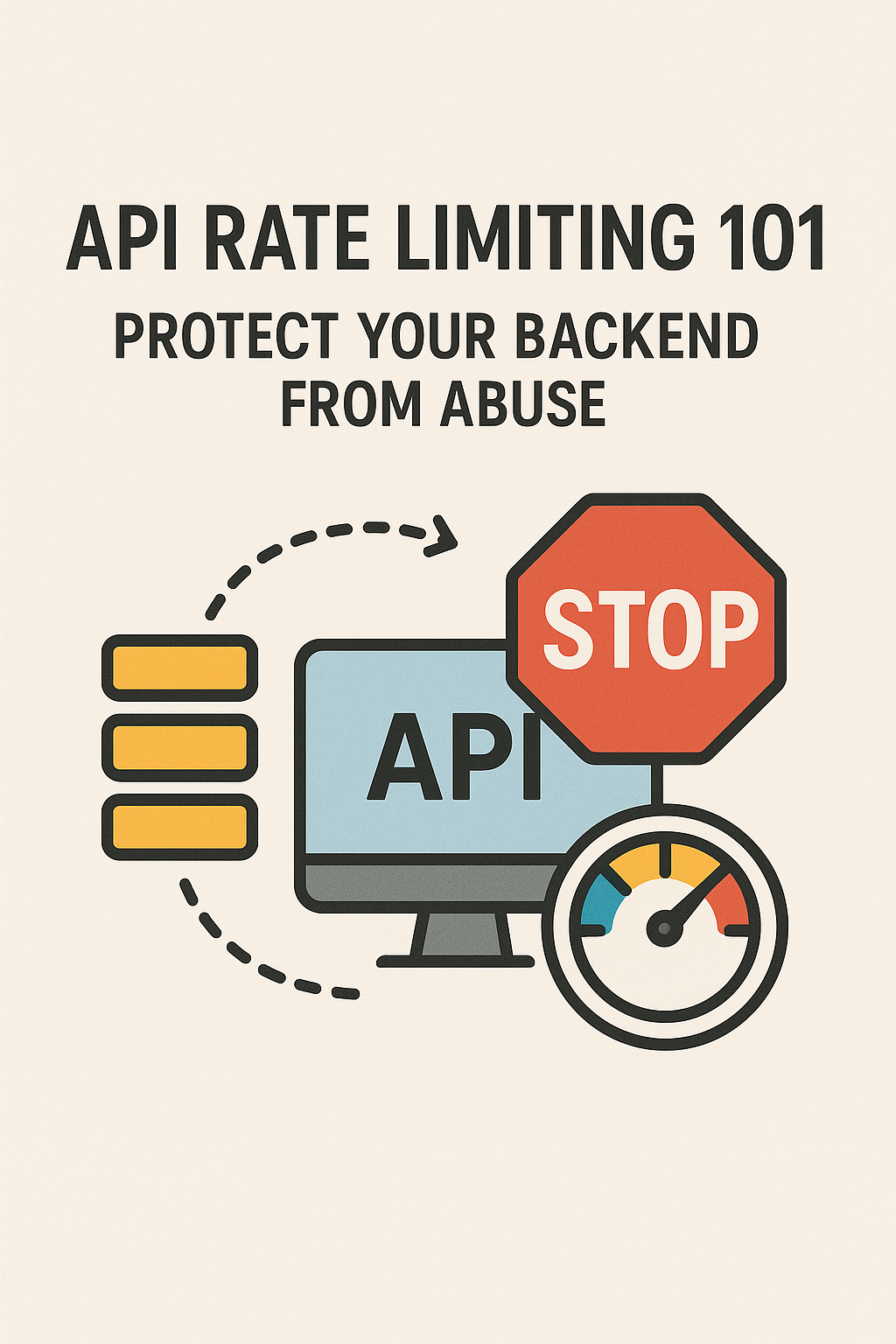
In today’s API-driven world, protecting your backend isn’t just about authentication—it’s also about controlling how often clients can hit your endpoints. Without proper rate limiting, your backend is vulnerable to DDoS attacks, resource exhaustion, and abuse from overzealous users or bots.
This guide covers everything you need to know about API rate limiting in 2025—what it is, why it matters, and how to implement it effectively.
🛡️ What Is API Rate Limiting?
API rate limiting is a technique used to control the number of requests a client can make to your server over a specific time period. The goal is to:
- Prevent server overload
- Deter abusive behavior
- Ensure fair usage
- Protect paid or premium features
⚠️ Why You Need It
Without rate limiting:
- A single bad actor can flood your server
- Bots can brute force your endpoints
- Your API bill can skyrocket with overuse
- Other users may experience degraded performance
Even trusted users may unintentionally cause harm without limits in place.
⏱️ Common Rate Limiting Strategies
- Fixed Window
- Allows X requests per time window (e.g., 1000 requests/hour)
- Simple but can cause burst issues at window edges
- Sliding Window
- Tracks requests over a rolling window
- More accurate but requires more computation
- Token Bucket
- Tokens refill at a steady rate; each request consumes a token
- Allows bursty traffic while still enforcing long-term limits
- Leaky Bucket
- Requests are processed at a fixed rate; excess is delayed or dropped
- Smooths out traffic spikes
🧠 Choosing the Right Strategy
| Strategy | Burst Tolerant | Accurate Over Time | Complexity |
|---|---|---|---|
| Fixed Window | ❌ | ✅ | Low |
| Sliding Window | ✅ | ✅ | Medium |
| Token Bucket | ✅ | ✅ | Medium |
| Leaky Bucket | ✅ | ✅ | High |
🔐 Key Factors to Consider
- Identify clients: Use API keys, user tokens, or IP addresses
- Per-endpoint limits: Stricter on expensive or sensitive endpoints
- Custom tiers: Give higher limits to premium users
- Rate limit headers: Return info like
X-RateLimit-Remaining - Handling exceedance: Return
429 Too Many Requests+ retry info
🛠️ How to Implement Rate Limiting
In Node.js (Express + express-rate-limit)
const rateLimit = require('express-rate-limit');
const limiter = rateLimit({
windowMs: 15 * 60 * 1000, // 15 minutes
max: 100, // limit each IP to 100 requests per window
message: 'Too many requests, please try again later.',
});
app.use('/api/', limiter);
In Dart (Shelf Middleware Concept)
final handler = const Pipeline()
.addMiddleware(rateLimitMiddleware(maxRequests: 100, window: Duration(minutes: 15)))
.addHandler(yourApiHandler);
Implement your own tracking system using Redis or in-memory maps.
🧰 Tools & Services That Help
- Cloudflare: Edge rate limiting before requests hit your server
- API Gateway (AWS/GCP): Built-in throttling controls
- Redis: Great for tracking usage in memory
- Serverpod: Add rate limiting as middleware on endpoints
✅ Best Practices
- Rate limit by user, not just IP
- Add retry-after headers for graceful client handling
- Monitor usage patterns and log violations
- Allow some burstiness but cap long-term usage
- Provide dashboard visibility for premium APIs
🚀 Final Thoughts
API rate limiting is a non-negotiable in modern backend architecture. It’s simple to implement but can save your backend from downtime, abuse, and unpredictable costs.
If you’re building APIs in 2025, adding rate limiting is one of the smartest, safest investments you can make.
